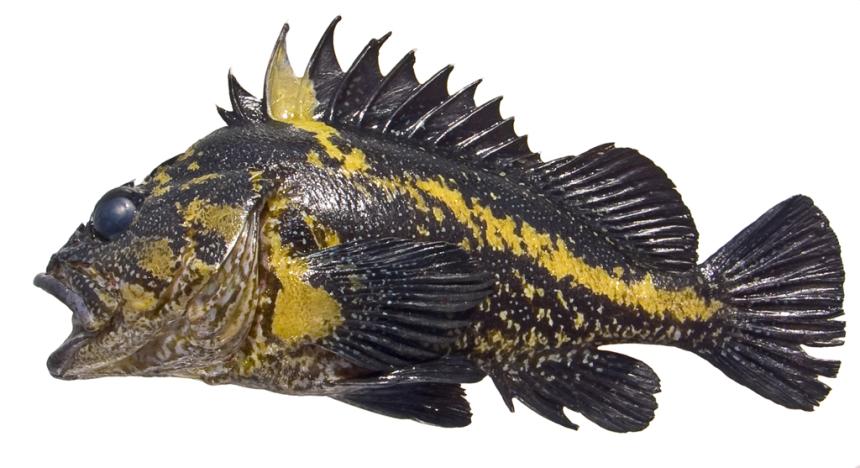Moderate-
High
Description and Range
Physical description
The body of the China Rockfish is compact and can be blue or black in color, typically mottled with yellow and some white. The main distinguishing characteristic of this fish is an obvious yellow stripe which starts on the dorsal fin at around the third spine and runs down, diagonally into and along the lateral line. The space between the eyes is concave, the head spines are strong, but the head lacks spines above the eyes.
China Rockfish grow up to 45 cm (18 in) in length and 1.9 kg (4.2 lb) in weight, living for up to at least 79 years.
Geographic range
China Rockfish can be found from Kodiak Island, AK to southern California at depths between 3 m (10 ft) and 128 m (420 ft). They are more common however, between British Columbia and central California, at depths greater than 10 m (33 ft). Chinas almost exclusively prefer rocky habitat with high relief and complexity. Interestingly, China Rockfish have also been seen cohabitating with Giant Pacific Octopus in rock crevices.
This species is known to have particularly small home ranges while also being territorial. Research conducted off of Vancouver Island showed that they are a relatively sedentary species after they reach adulthood, only moving around 10 m (33ft) from their home.
Climate vulnerability
Sensitivity to climate change
Moderate
The main sensitivity of China rockfish to climate change is likely to stem from changes to their prey base. Warmer ocean conditions could lead to decreases in prey (e.g., zooplankton) for both juveniles and adults, prompting decreases in adult fecundity and juvenile survival. Additionally, nearshore habitat loss due to sea level rise could impact juvenile survival, as juveniles tend to use nearshore habitat as nursery and foraging area. Deepwater coral habitat, which many adult rockfish use, may also decrease due to acidification, further reducing available habitat. Decreased oxygen levels may have direct physiological effects on China rockfish, leading to higher levels of mortality across various life stages. Due to their long life cycles and generation times, adults may be able to persist through short term pulses of negative ocean conditions (e.g., years with warmer sea surface temperature), though conversely, their low productivity could make it difficult for populations to recover from climate-related declines.
Exposure to climate change
Moderate-
High
- Increased ocean temperatures
- Sea level rise
- Declines in pH
- Decreased oxygen
Regulations
Rules and seasons
Recreational harvest within Puget Sound has been closed.
State record
- Weight
- 4.19 lbs
- Angler
- Steven Ripley
- Location
- Duncan Rock, Clallam County
- Date Caught
- July 11, 1989
